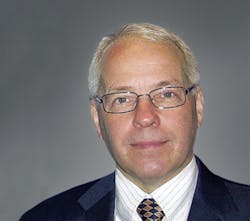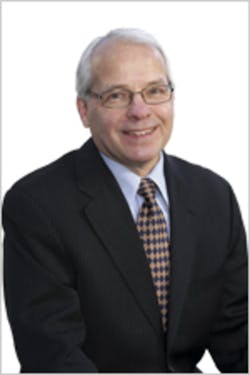Executive Editor
Engineers play an increasingly important role in medicine, designing medical electronics devices for clinical and home environments. Unfortunately, there can be an impedance mismatch inhibiting the flow of information between engineers and clinicians, according to Thomas Heldt, a professor in biomedical engineering at MIT.
Engineers are developing a growing number of smart wearable healthcare devices focused on managing cardiovascular disease, which remains the number-one killer worldwide according the American Heart Association. However, these engineers frequently lack a solid understanding of underlying physiology of cardiovascular and respiratory systems. Engineers, physicians, and patients would all benefit, Heldt said in a recent phone interview, if engineers had a better understanding of the physiological systems for which they are designing their electronics.
Unfortunately there are few opportunities to gain that understanding. Heldt said an engineer perusing medical-school literature would become discouraged at the molecular-level detail. Consequently, “There is often a mismatch between what an engineer wants to develop and what physicians need to improve their way of taking care of patients,” Heldt said. “Even if the engineer’s invention is sleek, if it doesn’t fit into the physician’s workflow, it is unlikely to be successful.”
For cardiovascular applications, Heldt proposes a “resistors and capacitors” approach to viewing the heart as an electrophysiological pump with a control system that regulates parameters such as blood pressure. The goal is to help break down the language barrier between the engineer and physician.
That’s the approach he and co-lead instructor Roger G. Mark, a professor of health sciences and technology and electrical engineering at MIT who also received an M.D. from Harvard Medical School, take in an MIT short program titled “Quantitative Cardiorespiratory Physiology and Clinical Applications for Engineers.”
The course is in its third year. The five-day version that will run June 12 to June 16 will add a respiratory component to the original three-day cardiovascular program. The course also can be offered at company sites for groups of employees.
Heldt’s “resistors and capacitors” phrase may suggest a model-based approach to learning, and indeed students will learn how to represent and analyze the function of the cardiovascular and respiratory systems using simple circuit models. But they also will gain an understanding the functional anatomy of the cardiovascular system through the dissection of a bovine heart, Heldt said.
The course places a needed emphasis on the clinical environment that’s often missing in the simulation and big-data environments in which engineers might address medical design and development. During a session focused on medicine during a 2014 MIT online course on big data, John Guttag, a professor of electrical engineering and computer science who makes use of data from sources ranging from ECG signals to biomarkers and video-based monitoring, said, “I believe firmly that over the next decade or so, computer scientists will do more to change medicine than anybody else on earth.”
Heldt acknowledged a role for big data. But he emphasized a need for quality control and preprocessing to throw out records that are suspect. Clinicians are very good at knowing which data elements to discount, he said. “Don’t put all your eggs in the analytical basket and throw out 200 years of clinical experience just because you have a few more data sets,” he added. “I don’t expect in my lifetime that a computer will take over for a doctor.”
About the Author

Rick Nelson
Contributing Editor
Rick is currently Contributing Technical Editor. He was Executive Editor for EE in 2011-2018. Previously he served on several publications, including EDN and Vision Systems Design, and has received awards for signed editorials from the American Society of Business Publication Editors. He began as a design engineer at General Electric and Litton Industries and earned a BSEE degree from Penn State.

